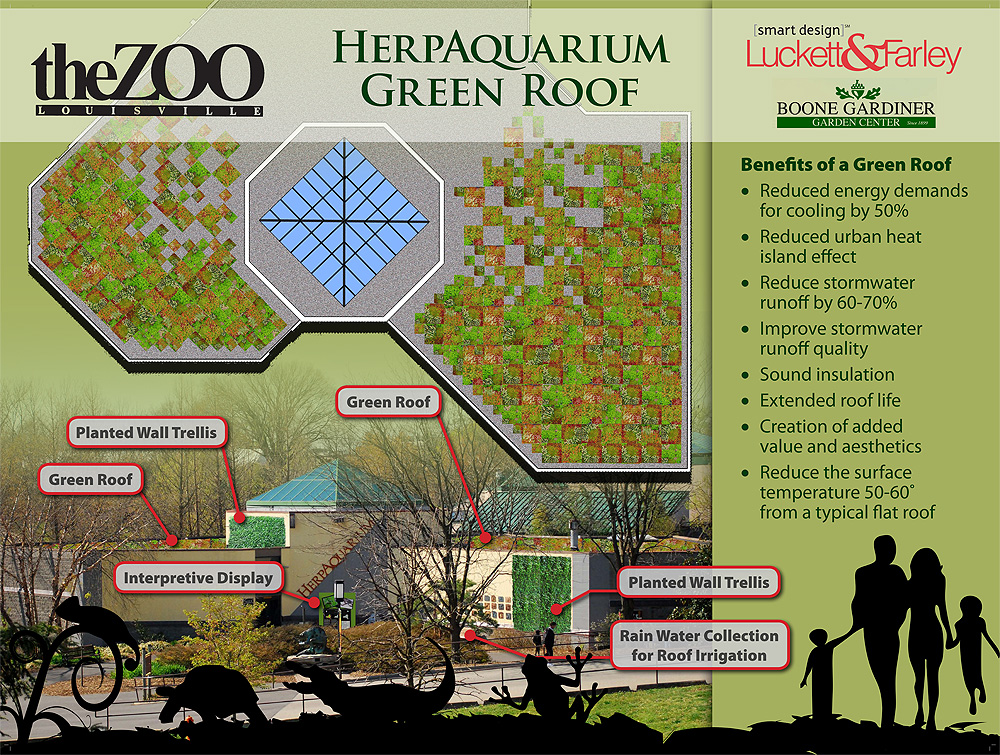Recently, the PGAV Specialty Development Team has been spending a lot of time focusing on practical applications of green principles in the complex world of zoos and aquariums. (We have spent very little time looking at aquariums as the amount of energy required to run an aquarium is beyond the practical approaches we are familiar with at our basic level of understanding.) But, nonetheless, zoos are making strides in the green world. And are finally getting recognized for their efforts. In 2010, Cincinnati Zoo and Botanical Gardens was named the National Energy Star Greenest Zoo in America for their work including a Platinum LEED building and the installation of solar panels over their parking lot. That same year, the Indianapolis Zoo received a Governor’s Award of Environmental Excellence for their recycling program, and was the first zoo in the nation to receive the EPA’s Green Power Leadership Award for their commitment to purchase electricity created by green means.
But, I was curious. What are most zoos doing these days to become green, or at least, to give the impression that they are ‘going green?’ And, how many of these practices are things that we as zoo designers can positively influence or encourage through design?
Last month, the Zoo Design SDT investigated those questions through a rather admittedly simple exercise: We browsed the internet to find green zoos and their practices.
Each of us collected the green practices of three zoos by searching for ‘green zoo’ on Google, then searching for all of the practices that zoo had published online. We then sorted the practices into general categories, like Sustainable Purchasing, Solar Panels, and LEED Projects.
We quickly realized that these categories fall into two overall groupings: Operational Practices and Physical Plan Components, or “Things we probably can’t affect” and “Things we definitely can affect,” respectively.
After gathering all of these practices, it is abundantly clear that although zoos are making strides to become responsible green leaders in their communities, there is a lot of room to grow. Most zoos have strong recycling and composting programs, have initiated a green purchasing program for zoo products (like compostable or corn based dining wares and recyclable content paper products), and have implemented strategies for decreasing utilities usage (like programmable thermostats and lighting on sensors). But more than that, consistent programs are scarce.
And physical plan green principles are the least implemented thus far. This indicates that although zoos have the best intentions, we have a long way to go, and as zoo designers, we are perfectly perched to help guide zoos through into the next generation of zoo design: Green zoo design.
To review realistic green options for exhibit design, re-check out my previous post "Green Design in Zoos."

